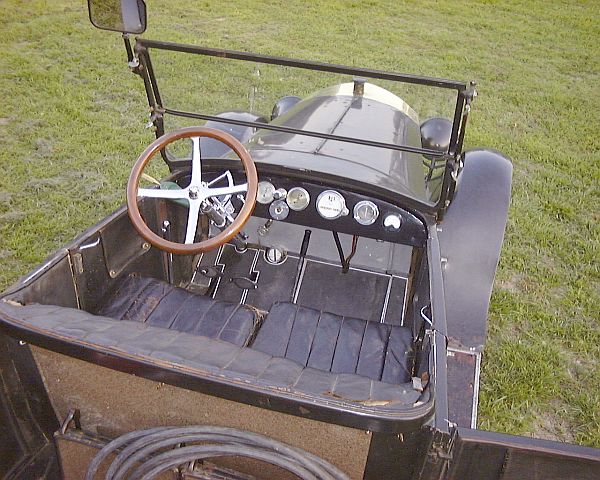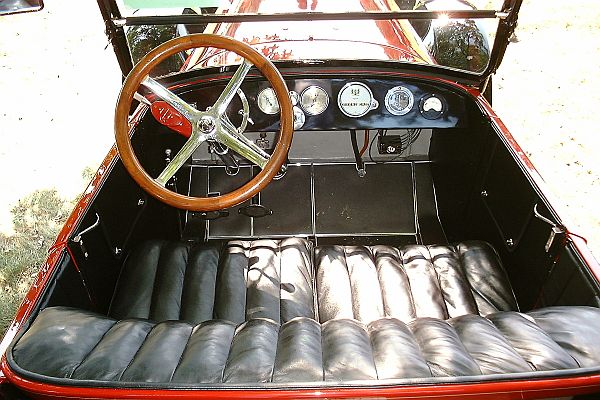|
Sometimes a couple of photographs are worth a thousand words. The two photos on this page show the interior of the car in 1999 after mechanical restoration and again in 2005 after the cosmetic restoration. The color of the car has changed from gunmetal gray to a two-tone red but otherwise things are pretty much the same. The interior appears much the way it did when the car left the factory in both photos however the original leather and floorboard linoleum has been freshened up a bit. The leather seats and other interior components that were removed were carefully packed for storage and have been retained for historical significance.
The car's restoration was carried out in two phases. First was the restoration of the mechanical aspects of the car. Once the car was mechanically sound and had been driven for 350 miles to work out any mechanical concerns, the cosmetic restoration commenced. In 2000 the interior was removed so that the body could be stripped of paint and prepared for minor body repair work and eventual painting. While the exterior of the car was being worked on from 2001 through 2004 various interior restoration activities took place. The process of restoring the car's exterior is detailed in the Body Restoration and Painting. The restoration of the interior maintained the original Stanley factory materials and execution as possible. The leather and front seat back carpet of the car when purchased were definitely original and a sample of the seat leather and floor carpet was exactly matched by Bill Hirsch Automotive Products in Newark, New Jersey. The seats were originally stuffed with horsehair. The car's seats were harvested of their horsehair so that the new leather seats could be stuffed with the original horsehair along with some additional hair from another Stanley. Heavy gray felt was used to replace the felting used for jump seat and side wall stuffing. The box spring units for the seat cushions underwent repair and were reused. While the rear seat spring unit could be reused, the individual springs of the front seat had to be replaced due to urine damage from the nesting squirrels and mice. For many years linoleum was not available in the US however it has made a comeback and Forbo now offers it for sale. Both the running boards and the front seat floorboards were finished in black linoleum. The aluminum edging used for the front seat floorboards was located at Youngstown Aluminum Products. As the original front seat wooden plank floorboards were in very poor shape and had been but modified in several places over the years, they were replaced with replicas.
Prior to any of the cosmetic restoration being started the dash and firewall were repainted. During the mechanical restoration after all the dashboard gauges and indicators had been removed, painting of the wooden dash panel and aluminum over wood firewall made sense. The firewall was originally an aluminum/silver color and this color was retained. The dash was a gloss black and gloss black was retained. Originally Stanley had used a "picket fence" style of wooden panel under each of the front seat cushions as well as the rear seat cushion to support the seat cushions on seat boxes. As these panels had been modified sometime in the past and since they were falling apart they needed to be replaced. While driving the car after the mechanical restoration it was noticed that the seats really got warm (especially the passenger's seat cushion). The replacement seat support panels were made in the Stanley style with respect to wood thickness and construction however they were made as solid panels to keep the heat from the steam lines under the car as well as the exhaust from warming the seats as the car was driven. |


